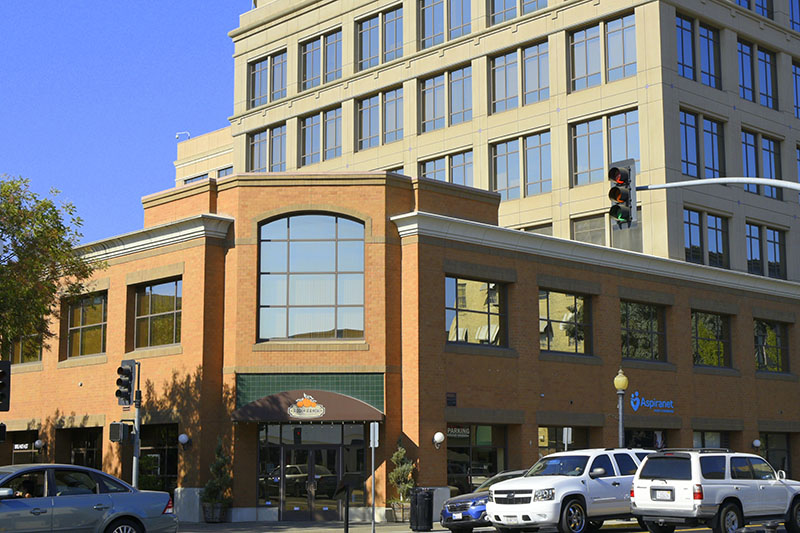
About every ten years, there is a significant turnover of leaders in Stanislaus County. Each newly elected group lacks the institutional memory of departing incumbents. High staff turnover within city and county government makes understanding what the departing group planned difficult. City managers come and go like shoppers through a revolving door. New leaders often choose to change direction.
With the loss of institutional memory, new officeholders tend to make the same fundamental mistakes as their predecessors did. Thus, every ten years or so, the county starts at square one: It studies the local economy, commissions new surveys, hires consultants, and devises a new economic plan. Usually, this is done without bothering to read any of the previous surveys and studies, while thinking that the reports are obsolete or that the plan must be reinvented.
An excellent editorial in the December 12 issue of the Modesto Bee offers reasons to be optimistic that a new plan will produce economic benefits for a resurgent Stanislaus County economy. It’s also possible yet another unsuccessful effort to bring our community out of its boom and bust economic pattern may emerge.
Every economic plan has rosy predictions at the outset. When implementation begins, government spends money. Subsequently, the private sector underperforms.
Economic development takes years. Prosperity does not appear suddenly after a report is published. The government does not hold hands with the private sector and walk together down Prosperity Lane. Rather, the government lays the groundwork for the private sector to do its thing.
The private sector, sometimes called free enterprise, is usually overestimated in every report to government leaders. Promises from people claiming to represent the private sector are often broken. Lies are often told to get subsidies from government.
For example, many cities expend great effort to attract a big employer and then the subject locates in another city after money has been spent.
From the 1960’s through the 1980’s, Stanislaus County’s economic base was agriculture and manufacturing. As companies were bought out and closed, manufacturing gradually moved out of the area. Modesto lost FMC (Food Machinery and Chemicals Corporation). Riverbank lost its Army Ammunition Plant and a major cannery. Oakdale lost Hershey’s. Turlock lost International Paper. Kraft moved to Visalia and Post Cereals moved. Canneries countywide consolidated and closed.
While major corporations moved jobs overseas, Modesto zoned four small business parks that took over 20 years to be filled. Beard was and is the largest industrial park in the area. At the eastern end was a major Santa Fe rail yard, which was moved to San Joaquin County. So as local government made more space for industrial growth, industry moved out.

In the 1990’s, the Dick Lang Administration naively thought that future prosperity would come from the relocation of Silicon Valley to Modesto. To prepare for anticipated increased demand for government services, Modesto built a Convention Center, a new city/county government center (Tenth Street Place), and a new police station. Meanwhile, Stanislaus County built a new government complex off south Crows Landing Road. Large housing subdivisions were subsidized with taxpayer money, large capital expenditures were made for new government infrastructure, and grand visions for city expansion were not realized.
By the end of the 1990’s, the economic boom had fizzled. Village One construction nearly stopped and left a shortage of $35 million in infrastructure fees, and the City of Modesto was deeply in debt. With little money in its treasury, the Modesto City Council opted out of participation in construction financing of the Gallo Center for the Arts after receiving a request to donate $15 million. The city didn’t have enough money to repair infrastructure such as sewers and roads, let alone fund an entertainment center.
The history of all the cities in Stanislaus County paralleled Modesto’s. Thus, a countywide economic growth plan could be useful, assuming all the governments can get together and reach agreement. In the past, every political jurisdiction operated as independent fiefdoms. Unity would be a refreshing change.
In Part 2 of this report, we will examine Stanislaus County’s condition from the early 2000’s to the present and forecast what the Stanislaus County 2030 Economic Plan might look like.

Bruce — whatever happened to the idea of limiting growth? As the population of Modesto and environs have grown, has prosperity for all citizens grown as well? Why don’t we build UP?
Keep up the excellent reporting.
The observation of continual changing staff and elected officials is obvious when we look at the many “new” plans being proposed… with the last great plan quickly forgotten. You accurately identified another problem, the inability of the region to develop a longterm regional plan. Rather, each city has a plan that changes as quickly as the staff and elected officials. My observation is the county officials, along with Stanislaus Community Foundation, have a plan for attracting big business but never propose the concept of directing that growth away from the best farmland. There doesn’t appear to be a long range plan for identifying where we will grow and where we won’t grow. Until the powers that be can save the farmland that is the basis of our Ag industry and infrastructure, we are destined to become another LA.
Jeani Ferrari: Stanislaus County is dead last in housing starts in the San Joaquin Valley. How can we become the next Los Angeles without housing? At least 500,000 acres of farmland will be fallowed soon. The loss will mostly be in export crops. How many almonds can we eat? A ranking member at the farm bureau told me, not long ago, “These guys can grow crops on asphalt.” Should loss of farmland be our chief concern when most of our farmland is used for export? What if it were widgets being sent overseas? Would we be so concerned at losing them? How much of our booming farmland economy has trickled down?
“These guys can grow crops on asphalt” because when most of the farmland was monopolized by Big Ag’s “bigger is better” demands, many farmers were seduced into leaving what was once truly an agri-culture, in exchange for a mono-culture, and were then required to invest in heavier and heavier machinery that destroyed the topsoil and compacted the dirt, plus add on tons of heavier usage of fertilizers, and pesticides, which are literally toxic to the life underground that are needed to grow health laden crops, which hastened the deterioration of the top soil. Thus what is left is more like asphalt than humus, and crops designed to be much firmer for long distance travel, nearly taste-less, and nutrition-less.
Oh how I long for the good old days when every farm grew food on healthy soil and produced a bounty of health promoting food. I hear that Big Ag farmers are not allowed to eat the food they grow, they have to go to the grocery store, like us.
I find absolutely no humor and take no pride in the farm bureau’s comment about most of today’s Big Ag farmers having learned an uncanny ability to grow crops on the asphalt they themselves created. Far too many farmers sold out to Big Ag rather than stand their ground. Instead of nurturing farmlands they created the conditions where valuable top soil blew away and the ground became so hard- packed that they wasted vital water resources attempting to penetrate the surface of the farm land to get moisture where it needed to be.
How many people suffer from allergies and respiratory disease from all the dust and toxins in the air? Why, so we can export to other countries, who benefit from the destruction of our land and the diminishing of our water supply, so in the end we are faced with our own survival issues? How much water has China siphoned off to ship back to their homeland, while our landfills are brimming with tour throw away society’s junk, mostly made in China.
Even our garden hoses are manufactured in China, and laced with lead and plasticizers, assuring we cannot even grow our own food without adding toxins, practically speaking. Housing developers gouge us for every square foot, while I can recall my grandmother purchasing a brand new two bedroom ranch style house, in a brand new housing development, on a huge lot, for $10,000, where she always gardened.
I know their are expensive hoses on the market with fewer plasticizers and less lead, but the majority of people do not even realize what they are buying, or stop to think that someone may have lost their life making the hose they chose to purchase. My how things have changed. Was it a little more blissful not knowing what we know today? I would not trade knowing, for ignorance.
Bruce thanks for bringing a historical perspective to planning for the future. Seems like the problem is much more complex this time with the overall planetary shift to a new normal.
When/if we emerge from the ongoing and increasing chaos many things will be different. First and not even discussed often and widely is the growing potential of a nuclear conflict. There would be no good outcomes from it, including a nuclear winter which would wipe out most/all life as we know it. Throw in all the stuff we know about that will cause massive changes: climate change, pandemics, AI, massive migrations, accelerated technology displacement of workers, etc. makes planning for the future a risky gambit.
So how good will Stan2030 forecast be, even with a historical perspective, an old saying comes to mind: God only knows.
How connected is this Stan2030 with the United Nations, Agenda 2030? Are the two in sync? I query because becoming knowledgeable about Agenda 2030 causes me to question how well any county in the entire USA will be successful if the 2030 plans would try to skirt the United Nations agenda for 2030. I know many think Agenda 2030 will never happen, yet from what I gather, the democrats seem quite willing to comply with the United Nations plans, although I do not hear them transparently talking about this.
Is anyone out there aware of Agenda 2030. Does Stan2030 fit into it, against it, or somewhere midway?
From what I understand, Agenda 2030 is something to be well aware of because it seems quite likely to change how we here in the USA conduct ourselves. I sincerely hope I am wrong. I am not a globalist…
Thanks to all for the brilliant observations and comments.
Elaine Gorman asked why builders don’t build upward and give the land a break. The answer I received was “we don’t do that type of construction”. Single family home builders only want to construct single family homes. Local leaders are glad to accommodate their campaign contributors, giving little consideration to the latest General Plan that they actually approved. Every time you read in the newspaper about a General Plan Amendment, it involves a developer who wants to make a change that will pad profits at the expense of a better future for the community.
If you look at history of the worst traffic congestion points in the city, they are the result of decisions that deviated from the General Plan and were approved contrary to recommendations of the paid traffic engineers on the staffs.
The best communities in California are the ones that devised good plans from the outset and stuck with them. in the 1980’s, Modesto looked like a city that would move into the upper tier of communities with the Villages plan. Sadly, no one on the City Council ever intended to stick to it. The plan was simply a Trojan Horse to get more cookie cutter subdivisions approved while the jobs component was discarded, amendment after amendment.
Will the 2030 plan results be any better? Not if it is ignored via amendments after adoption.